SIDE PROJECT
product management
2023
This feature fosters a seamless collaboration environment. Team members can actively engage in real-time, making the development of user stories and acceptance criteria a collective effort. This real-time interaction reduces misunderstandings and ensures that everyone is on the same page.
Let me give an example,
User Mia has successfully logged in,
followed by user Kermit
Together, Mia and Jack open user story 1.1.1. of Jack's Project as they collaborate
Mia,
Kermit,
When Mia types, her sentence "Mia is writing" becomes visible to Kermit. Conversely, when Kermit types, Mia can see his sentence "Kermit is writing."
Additionally, both users can see who is actively writing each sentence, enhancing their collaborative experience.
By allowing multiple users to contribute simultaneously, the feature significantly speeds up the process of defining and refining user stories and acceptance criteria. This leads to a more efficient workflow, as teams can quickly iterate and agree on project requirements.
In summary, the User Story Acceptance Criteria Collaboration Feature is a powerful tool that enhances team synergy, improves efficiency, ensures clarity and quality, and adapts to the dynamic needs of software development projects.
With movable epic cards, you can now effortlessly restructure and prioritize your project's larger bodies of work. This flexibility allows for dynamic adjustments in your planning process, ensuring that your user story mapping aligns perfectly with evolving project needs and priorities.
In my continuous quest to enhance productivity, we're thrilled to introduce a groundbreaking update: drag-and-drop functionality for theme cards. This feature revolutionizes how tasks are organized, offering a smoother, more intuitive approach to managing your workflow.
Gone are the days of tedious task arrangement. With our drag-and-drop capability, you can effortlessly rearrange and prioritize tasks, allowing you to visually structure your project with ease and agility.
Take a look at the features I've implemented.
This isn't just a cosmetic improvement; it's a significant leap in making your workflow more adaptable and user-centric. Embrace the flexibility of real-time layout adjustments and experience a more dynamic way of handling tasks. This update marks our commitment to providing tools that are not only efficient but also intuitively align with your work style. Say farewell to the constraints of fixed structures and welcome an era of fluid, responsive task management.
Say goodbye to rigid structures and hello to a dynamic way of managing tasks!

Transforms how teams collaborate and manage tasks within my tool.
Now, each user story can be assigned to specific team members, bringing clarity to who is responsible for what. This assignment not only streamlines task management but also boosts accountability and efficiency. Team members can easily track their responsibilities, and project leads gain a clear overview of task distribution and progress.
By fostering a more organized approach to task delegation, this update is set to significantly enhance team collaboration and productivity.
Embrace this new feature and experience a more cohesive and efficient project management journey. Take a look at the features I've implemented.
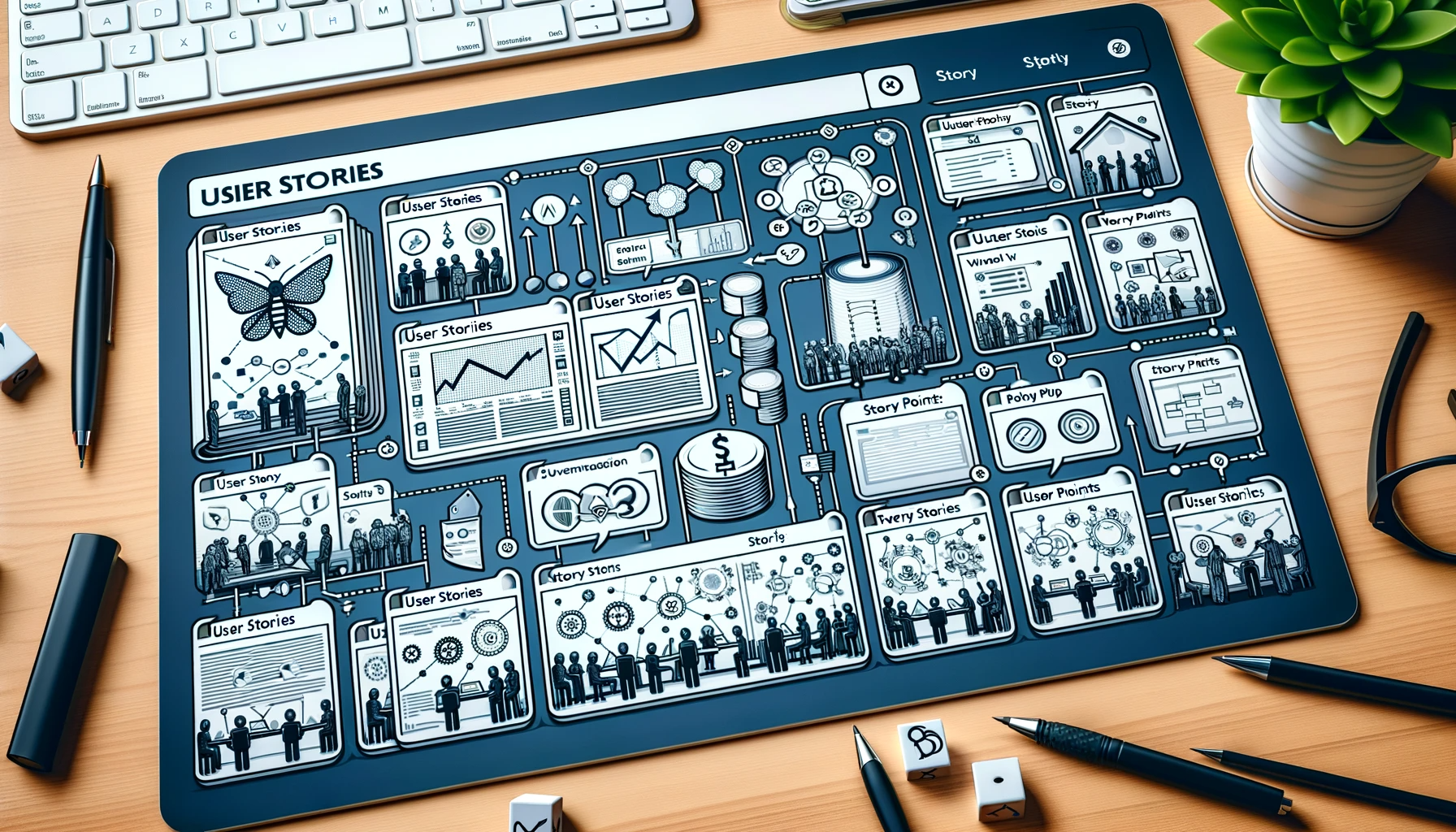
In Agile project management, a user story point is a unit of measure used to express the overall effort required to implement a user story. Story points are abstract and relative, reflecting the complexity, risks, and effort involved, rather than time. They are used to estimate the work and prioritize tasks during planning. Unlike hours or days, story points allow teams to account for non-linear aspects of problem-solving, like uncertainty or technical complexity.
This helps in agile planning and sprint allocation, providing a more flexible approach to understanding and managing workload.
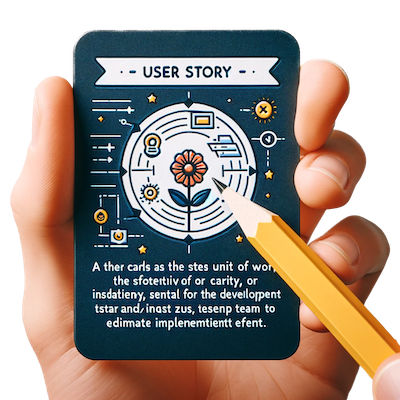
In Agile methodology, the user story is a fundamental element. It represents the smallest unit of work, embodying a single feature or function from an end user's viewpoint. The beauty of a user story lies in its conciseness; it provides just enough detail to allow the development team to estimate the effort required for implementation.
User stories are the building blocks of larger Agile projects, translating complex functionalities into bite-sized, manageable tasks. They serve as a bridge between the technical aspects of development and the practical needs of users, ensuring that the final product is not only functional but also user-centric.
By focusing on user stories, development teams can remain aligned with user needs, creating a product that truly resonates with its audience. Take a look at the features I've implemented.
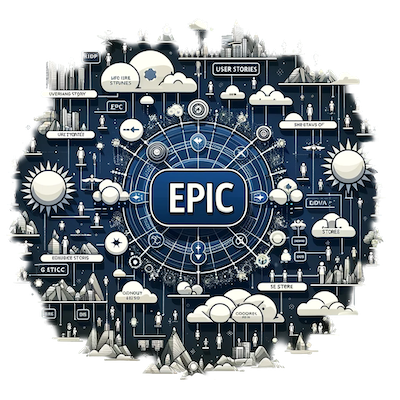
In the world of Agile project management, an epic holds a pivotal role. It's a substantial body of work, much larger in scope than individual user stories. Epics encapsulate a series of related actions, tasks, and objectives, providing a broader, more comprehensive view of a project's goals and requirements.
Breaking down an epic into specific, manageable user stories is a strategic approach to tackling complex projects. This breakdown makes it easier for teams to address each component with precision and clarity, allowing for a more organized and methodical workflow. The completion of these user stories, piece by piece, leads to the fulfillment of the overarching epic, marking significant progress over time.
By understanding and utilizing epics effectively, teams can navigate complex projects with greater ease and efficiency, ensuring that every large-scale task is systematically addressed and brought to completion.
By understanding and utilizing epics effectively, teams can navigate complex projects with greater ease and efficiency, ensuring that every large-scale task is systematically addressed and brought to completion. Take a look at the features I've implemented.
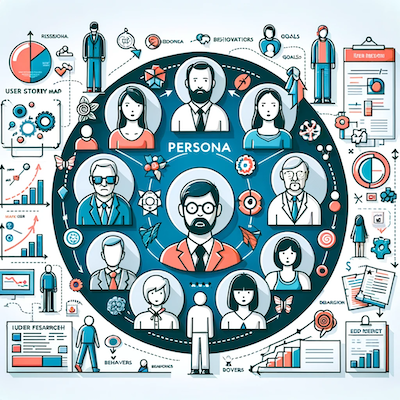
In user story mapping in agile, a persona is a fictional character that represents a specific group of users or a user archetype. These personas are created based on user research and include detailed character sketches that outline the personas' demographics, behaviors, needs, and goals.
In the context of user story mapping, personas help the development team to understand and prioritize the needs and experiences of different user types, ensuring that the product features and user journeys are designed to suit the end users' perspectives and requirements.
And yes I can use personas for themes. Personas represent specific user groups, and themes are broad focus areas in your product or service. By aligning themes with personas, you can ensure that each theme addresses the needs, behaviors, and goals of its respective user group. This alignment helps in creating more targeted and user-centric themes, enhancing the relevance and effectiveness of your product's features and functionalities.
My product management tool is a unique blend of various agile methodologies, offering a comprehensive approach. Take a look at the features I've implemented.
In my pursuit of crafting exceptional software, I recognize the power of organization. That's why I'm introducing theme cards into my product management tool. A theme encapsulates a vast area of focus, bridging multiple projects or epics under one umbrella. It is the guiding star of the development process, aligning various epics and user stories with a singular, overarching goal.
Take a look at the features I've implemented.
By adding theme cards to your project, you're not just plotting tasks; you're mapping out your vision. This high-level organizational tool translates grand objectives into actionable segments, ensuring coherence and direction in the development journey. As I integrate theme cards, I streamline the transition from big ideas to detailed execution, providing clarity and structure every step of the way. Embrace the clarity that theme cards bring and watch as your grand vision takes a structured, actionable form in your product management tool.

With this latest enhancement, project leads can now bring together diverse skill sets, experiences, and perspectives by simply adding team members to various projects. This integration is designed to foster collaboration, allowing for more dynamic interaction and exchange of ideas among team members.
The impact? A smoother workflow that not only boosts productivity but also enhances the overall quality of output.
By streamlining the collaborative process, we're ensuring that teams can work more effectively, tracking progress and assigning tasks with ease.
We understand that in the modern workspace, efficiency is synonymous with productivity. That's why we're committed to continuous updates that empower you and your team to do more, better. Start exploring this new feature and take the first step towards optimized project management and elevated productivity.
Take a look at the features I've implemented.
1. User Mia successfully added user Kermit as a team member to her first project.
2. User Kermit now has access to view User Mia's initial project on the project list page.
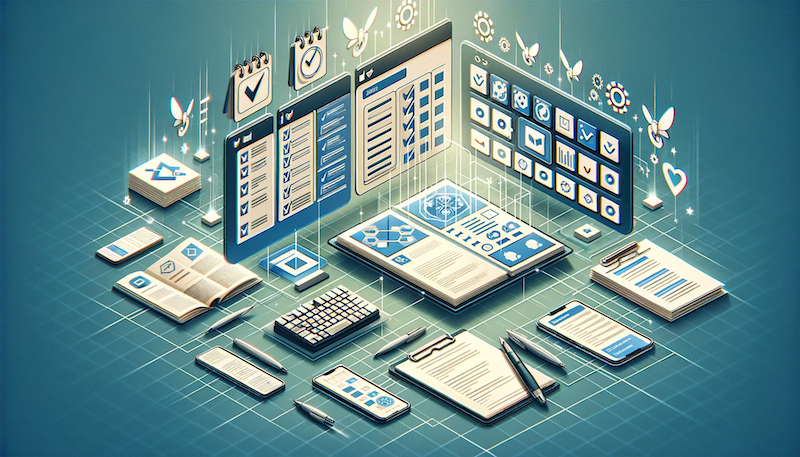
Exciting developments are underway! My latest update brings a powerful new module designed to enhance the functionality of my application, taking product management to the next level. This simple addition is not just an upgrade—it's a complete transformation of how users manage and organize their projects.
With this feature, efficiency is at your fingertips. Seamlessly manage tasks, delegate responsibilities, and track progress—all within a unified interface. I've honed in on what it means to manage projects effectively, ensuring that organization is intuitive, and every action is streamlined for optimal performance.
Stay tuned as I continue to refine my tool, ensuring it remains an indispensable part of your project management arsenal.
Stay tuned as I continue to refine my tool, ensuring it remains an indispensable part of your project management arsenal. Take a look at the features I've implemented.
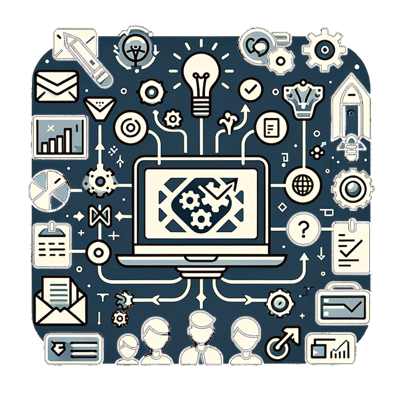
In the evolving landscape of project management, the introduction of my new module marks a significant stride in productivity and user engagement. I have carefully designed this addition to simplify the project creation process, effectively minimizing the time from conception to action.
My focus was dual-fold: to refine administrative tasks and to provide an enriching user experience. The module integrates seamlessly, allowing for quick input while offering a responsive interface that's a delight to navigate. It's not just about efficiency; it's about creating an environment where management becomes a natural extension of the creative process.
By enhancing the overall structure, we've made room for users to focus on what truly matters—their visionary projects.
This upgrade stands as a testament to my commitment to continuous improvement and user satisfaction.
I am excited to see how this new development will empower my users to achieve and manage more, with less effort. Take a look at the features I've implemented.
This is a project create feature. The project list feature displays all your created projects for easy tracking and management.

In the digital age, the signup feature is the gateway to user engagement. It's not just about creating an account; it's about crafting a secure and welcoming entry point for users. A well-designed signup process begins with a user-friendly interface, guiding users through easy yet secure steps.
Email verification is a critical layer in this process, ensuring authenticity and paving the way for future communications. Moreover, the introduction of strong password requirements fortifies user accounts against unauthorized access.
Take a look at the features I've implemented.
1. After entering their information, the user is prompted to check their email for verification.
2. If the user hasn't verified their email, they receive a notification: "User email is not verified."`
3. The user should check their email (using maildev for test environment)
Once the email is successfully verified, the user gains access to log in to the system.

Implementing a login feature for a project management tool is crucial for security and user management.
The process typically involves creating a secure login page where users can enter their credentials. This page should connect to a backend system that verifies the information against stored user data, possibly using techniques like OAuth for social logins or SAML for enterprise single sign-on. Ensuring data encryption, like using HTTPS, and having a robust password recovery system are essential.
The goal is to provide users with a seamless and secure experience while safeguarding the tool from unauthorized access.
Take a look at the features I've implemented.
P.S: For enhanced security, implementing multi-factor authentication (MFA) can add an extra layer of protection.

While there are numerous project and task management tools available, many of them lack one crucial element: simplicity. This led me to embark on the journey of creating my own project and task management application. The driving force behind this venture was the desire to strip away the complexities that often overshadow the core functionality of such tools. I aimed to develop an application that was user-friendly, yet robust enough to handle the nuances of project management.
The journey was not just about building another tool, but about rethinking the approach to project management. The focus was on creating a seamless and intuitive interface that would make project planning and execution as straightforward as possible. This meant incorporating features that were essential, yet not overwhelming, allowing users to focus on their tasks without being bogged down by unnecessary details.

Throughout the development process, I also realized the importance of adaptability. The application needed to be flexible enough to cater to a wide range of projects, from small personal tasks to larger, more complex team-based projects.
In conclusion, the creation of this project and task management application has been a journey of understanding and addressing the core needs of project management in a simple yet effective manner. It's a testament to the idea that sometimes, less is more, especially when it comes to managing our work efficiently.